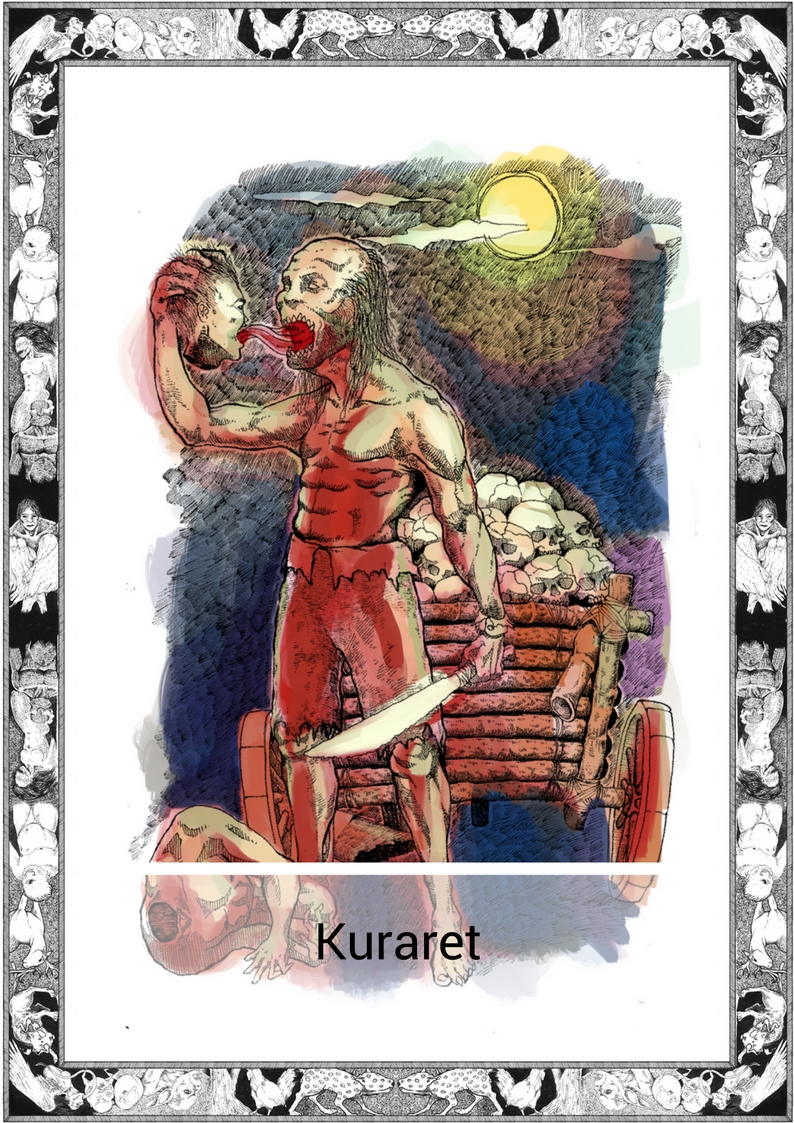
*Note this story is in Cebuano
Sa lungsod diin gadako akong lolo, walay gitugotan nga magstorya inig gabii. “Madunggan pa gihapon nako ang tingog sa iyang puthaw nga kariton,” iyang ingon.
Medyo lain pud to og timpla akong Lolo. Kadtong bata pa mi, modagan lang to siyag kalit kung maglangas-langas mi, aron motan-aw kung wala ba mi naunsa. Og maninguha pud si Lolo nga dili mag langas.
Magbasol gyud ko pirmi kun mangutanag ngano man.
“Mo-biyahe to sa lungsod inig gabii, magbira sa iyang puthaw nga kariton. Ang sulod, mga ulo sa kalabira, ang iyang mga guipangpatay. Ang mga di kibaw manghilom.”
Sa iyang pagkasulti, klaro nga adunay kaila si Lolo nga guipatay. Dili siya maghisgot kung kinsa pero inig katulog niya, ako siyang madunggan.
“Ernesto, pasagdi siya. Pasagdi siya, akong igsuon, pasagdi siya.”
Moagi kuno sa among balay. Ga-tuo iyang igsuon nga isog siya, apan bogo man, og walay buot.
“Gisuklan niya ang ungo, og nakabayad nuon siya.”
Pirmeng magwali si Lolo sa nabayran. Naa gyud kunoy presyo kung makuha sa ungo ang iyang gusto. Wa gyud nuon ko kasabot hangtod guiklaro ni Lolo.
“Madawat ra man unta namo nga daghan og nangamatay, pero manghilabot man gud to siya og butang nga ang Kamatayan ra unta dapat moangkon.
Gikuha sa ungo ang kalag sa igsuon ni Lolo.
Dili man unta ko mutuo og kalag, og sa mga ungo nga maminaw kon mo-ngitngit apan nagsugod og tingog pagkamatay ni Lolo.
Nadunggan nako ang mga ulo sa kalabira, ga hapak-hapak sa sulod sa kariton. Madunggan nako ang mga singgit sa iyang mga biktima, gapakaluoy nga iyang buhion. Nadunggan nako ang danguyngoy sa akong lolo, nangamuyo para sa kinabuhi sa iyang igsuon.
“Ako na lay kuhaa palihug.”
Maayo untag dili na maningog. Di nako masabtan nganong magsunod-sunod ang mga tingog ni Lolo, og nganong karon, ako na pud ilang gi sunod-sunoran. Gusto nakong dili tagdon, pero di mahimo.
Kada gabii, nagkalangas.
English Version
In the town where my lolo was raised, no one was allowed to talk at night.
“I can still hear the sound of its iron cart,” my lolo used to say.
Growing up with him was strange. When we were kids and we would make a sound at night he would run towards us and make sure we were quiet, trying not to make noise himself.
I always regretted asking him why.
In that town it traveled at night, pulling its iron cart. The cart was filled with the skulls of its previous victims.
“The ones that didn’t know how to keep their mouths shut.”
The way my lolo told the story, I knew that he had lost
someone to the monster. He never spoke of it much, but sometimes, at night while he was asleep I could hear him.
“Ernesto, my brother Ernesto, leave him alone.”
He told me it passed by their house. His brother was brave and foolish, he thought he was invincible. The truth of youth was strong within him.
“He challenged the monster and paid the price.”
Lolo would always go on about the price. How it was something that was paid when it got its way. I never understood what it really was until he explained.
“It would not matter to us had the monster only taken lives, but it took something that only death should claim.”
My lolo’s brother had lost his soul to it.
Now, I don’t really believe in things like souls and monsters that listen in the night, but after lolo died the sounds began.
I could hear the skulls knocking against each other in its cart. I could hear the screams of its victims, begging for their eternal release. I could hear the last gasp of my lolo, pleading for his brother’s life.
“Please, take me instead.”
I wish the sounds would go away. I don’t know why they followed lolo and why they’re following me. I try to ignore them, but I can’t.
Every night they get louder.
*The Cebuano language, alternatively called Cebuan and also often colloquially albeit informally referred to by most of its speakers simply as Bisaya (“Visayan”, not to be confused with other Visayan languages nor Brunei Bisaya language), is an Austronesian regional language spoken in the Philippines by about 21 million people, mostly in Central Visayas, western parts of Eastern Visayas and most parts of Mindanao, most of whom belong to various Visayan ethnolingusitic groups, mainly the Cebuanos. It is the by far the most widely spoken of the Visayan languages, which are in turn part of wider the Philippine languages. The reference to the language as Bisaya is not encouraged anymore by linguists due to the many languages within the Visayan language group that may be confused with the term. The Komisyon ng Wikang Filipino, the official regulating body of Philippine languages, spells the name of the language as Sebwano.
Written by Karl Gaverza
Cebuano Translation by Janjan Perez
Copyright © Karl Gaverza
Translation Copyright © Janjan Perez
Inspired by the Kuraret legends from La Union
Kuraret Illustration by Leandro Geniston
FB: That Guy With A Pen
Color by Alexa Garde:
Website: Lexa.us
